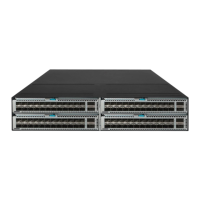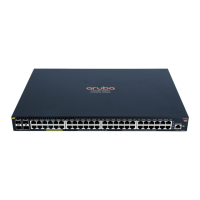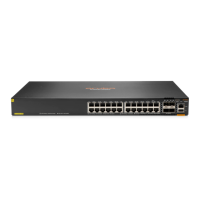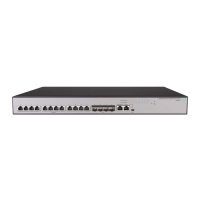174
6BConfiguring tunnel policies
85B
Overview
Tunnel policies enable a PE to forward traffic for each MPLS VPN over a preferred tunnel or over
multiple tunnels. The tunnels supported by MPLS VPN include MPLS LSPs and MPLS TE tunnels.
For more information about MPLS TE, see "
756HConfiguring MPLS TE." For more information about
MPLS VPNs, see "
757HConfiguring MPLS L3VPN."
86B
Configuring a tunnel policy
217BConfiguration guidelines
When you configure a tunnel policy, follow these guidelines:
• To select a preferred tunnel, create a tunnel policy and configure the preferred tunnel with the
preferred-path command. The destination address of the preferred tunnel identifies a peer PE
so the PE will forward traffic destined for that peer PE over the preferred tunnel.
{ If you configure multiple preferred tunnels that have the same destination address in a
tunnel policy, only the first configured tunnel takes effect.
{ If the first tunnel is not available, the second tunnel is used, and so forth. No load balancing
will be performed on these tunnels.
This method explicitly specifies an MPLS TE tunnel for an MPLS VPN, facilitating traffic
planning. As a best practice, use this method.
• To select multiple tunnels for load sharing, create a tunnel policy and specify the tunnel
selection order and the number of tunnels by using the select-seq load-balance-number
command. A tunnel type closer to the select-seq keyword has a higher priority. For example,
the select-seq lsp cr-lsp load-balance-number 3 command gives LSP higher priority over
CRLSP. If no LSP is available or the number of LSPs is less than 3, VPN uses MPLS TE tunnels.
The tunnels selected by this method are not fixed, complicating traffic planning. As a best
practice, do not use this method.
If you configure both methods for a tunnel policy, the tunnel policy selects tunnels in the following
steps:
1. If the destination address of a preferred tunnel identifies a peer PE, the tunnel policy uses the
preferred tunnel to forward traffic destined for the peer PE.
2. If not, the tunnel policy selects tunnels as configured by the select-seq load-balance-number
command.
As shown in
758HFigure 43, PE 1 and PE 2 have multiple tunnels in between and they are connected to
multiple MPLS VPNs. You can control the paths for VPN traffic by using one of the following
methods:
• Configure multiple tunnel policies, and specify a preferred tunnel for each policy by using the
preferred-path command. Apply these policies to different MPLS VPNs to forward the traffic of
each VPN over a specific tunnel.
• Configure one tunnel policy, and use the select-seq load-balance-number command to
specify the tunnel selection order and the number of tunnels for load balancing. Apply the tunnel
policy to MPLS VPNs to forward the traffic of every VPN over multiple tunnels.
The second method distributes traffic of a single VPN to multiple tunnels. The transmission delays on
different tunnels can vary by a large amount. Therefore, the destination device or the upper layer

